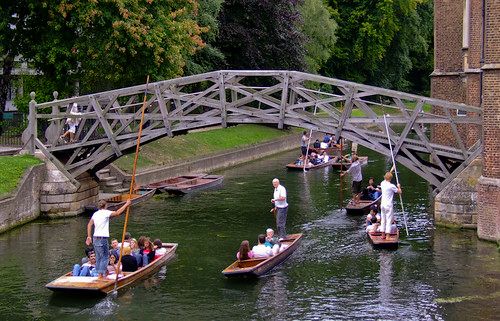About
The name “Mathematical Bridge” derives from the fact that this bridge is built with entirely straight timbers, though it maintains an arch shape. This makes for some interesting architectural study while punting down the river below it!
The legends surrounding the bridge are just as intriguing as its shape. According to local lore, the Mathematical Bridge was built by Sir Isaac Newton as an exemplary example of physics.
According to this tale, it was held up entirely by its own design and did not require any nails, screws, or bolts. The story goes that a group of Cambridge University students—or, in some versions, academics—took the bridge apart to prove that it was, in fact, only built with wood, and failed to be able to put it back together again.
The real story is slightly more mundane. The bridge was designed by William Etheridge and built by James Essex in 1749, 22 years after Newton's death, though he may have influenced its structure. The bridge is not and has never been built without any bolts or nails, though when first constructed, iron spikes driven into its joints gave the impression that it was built with only wood.
Related Tags
Know Before You Go
Access to the bridge is through the Visitor's Entrance located on Queen's Lane. There is a nominal fee, (3.50) charged per person. Admission allows you to cross the bridge, view the sun dial, and permission to walk on campus. You can view the bridge for free from the nearby bridge on Silver Street. A guided punting tour will take you underneath the bridge.
Community Contributors
Added By
Published
August 20, 2019





























































